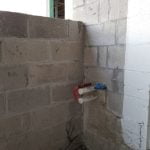Do home improvements qualify for tax deductions? Home improvements, also known as home renovations or remodeling, can have tax implications. This article provides an overview of the types of home improvements eligible for tax deductions, IRS guidelines, documentation required for claiming deductions, potential tax benefits, common misconceptions, and how to properly claim tax deductions. Understanding these aspects can help homeowners maximize potential tax benefits while making necessary upgrades to their properties.
Home improvements refer to any changes made to a residential property that enhance its value, functionality, or aesthetic appeal. These can include renovations to the kitchen or bathroom, adding a home office or gym space, installing energy-efficient systems, or making accessibility modifications. When it comes to tax deductions related to home improvements, there are specific types of upgrades that may qualify for such benefits. Understanding these distinctions is crucial for homeowners looking to utilize potential tax incentives.
The Internal Revenue Service (IRS) has established specific guidelines for what qualifies as deductible home improvements. These criteria outline the types of renovations that are eligible for tax deductions as well as any limitations or restrictions on the benefits available. In addition to meeting these guidelines, homeowners must maintain accurate records and documentation in order to successfully claim their deductions. Understanding the IRS requirements and maintaining organized records are essential steps in maximizing potential tax benefits from home improvements.
Types of Home Improvements Eligible for Tax Deductions
When it comes to potentially qualifying for tax deductions, not all home improvements are created equal. The types of home improvements that may be eligible for tax deductions can vary, but there are some common categories that have a higher likelihood of meeting the IRS criteria.
One category includes energy-efficient upgrades, such as installing solar panels, energy-efficient windows, or upgrading to a more efficient heating and cooling system. These types of improvements can not only benefit the environment but also provide potential tax benefits for homeowners.
Another category of home improvements that may qualify for tax deductions includes accessibility modifications. This can include adding wheelchair ramps, widening doorways, installing handrails, or making other adjustments to accommodate individuals with disabilities. These modifications are not only beneficial for improving the quality of life for those with mobility challenges but may also offer potential tax benefits for homeowners who make these upgrades.
It’s important to note that specific guidelines and criteria set by the IRS determine which home improvements qualify for tax deductions. Homeowners should also familiarize themselves with any limitations or restrictions on the types of improvements that qualify in order to ensure their projects meet the necessary requirements. By understanding the IRS guidelines on home improvement tax deductions, homeowners can make more informed decisions about which projects may offer potential tax benefits while also enhancing their homes.
IRS Guidelines on Home Improvement Tax Deductions
When it comes to claiming tax deductions for home improvements, the Internal Revenue Service (IRS) has specific guidelines that homeowners must follow in order to qualify. Understanding these guidelines is crucial for maximizing potential tax benefits and avoiding any issues with the IRS. Below, we’ll break down the IRS guidelines on home improvement tax deductions and provide valuable information for homeowners seeking to claim these deductions.
Specific Criteria for Eligibility
The IRS has established certain criteria that home improvements must meet in order to be eligible for tax deductions. Generally, eligible improvements must add value to the home, prolong its useful life, or adapt it to new uses. Examples of qualifying improvements may include energy-efficient upgrades such as installing solar panels or energy-efficient windows, as well as modifications to make a home more accessible for individuals with disabilities.
Limitations and Restrictions
It’s important to note that not all home improvements will qualify for tax deductions. The IRS imposes limitations and restrictions on the types of improvements that can be claimed for tax purposes.
For example, routine maintenance or repairs do not generally qualify for deductions, as they are considered part of regular homeownership responsibilities. Additionally, any improvements made using a home improvement loan or line of credit may have specific qualifications that need to be met in order to be eligible for tax deductions.
Consulting a Tax Professional
Navigating the IRS guidelines on home improvement tax deductions can be complex, so it’s highly recommended to consult a tax professional or accountant when considering these deductions. A qualified professional can help homeowners understand the specific eligibility requirements and ensure that all necessary documentation is complete and accurate before claiming any deductions on their taxes.
By understanding the specific criteria set by the IRS and seeking professional guidance when needed, homeowners can navigate the process of claiming tax deductions for eligible home improvements with confidence. Keeping detailed records and staying informed about potential benefits can ultimately lead to significant savings and increased financial rewards in the long run.
Documentation Required for Claiming Home Improvement Tax Deductions
When it comes to claiming tax deductions for home improvements, proper documentation is essential. Homeowners need to keep thorough and organized records of their home improvement expenses in order to qualify for tax benefits. Here is a detailed list of the necessary documentation required for claiming home improvement tax deductions:
- Receipts and Invoices: Keep all receipts and invoices from contractors, suppliers, or retailers for materials, labor, and any other related expenses.
- Contracts and Agreements: Maintain copies of any contracts or agreements made with professionals hired to complete the home improvements.
- Permits and Approvals: If the home improvements required building permits or approvals from local authorities, be sure to have these documents on hand.
- Before-and-After Documentation: Take photos of the areas of the home that were improved before the work begins and after it is completed. This visual documentation can help support your claim.
- Budget and Estimates: Keep a record of any cost estimates or budgets created for the home improvement project.
In addition to these specific items, homeowners should also maintain any other relevant documentation that demonstrates the nature and cost of their home improvements. Accurate record-keeping will not only help when it comes time to claim tax deductions but also serve as important evidence in case of an audit.
By staying organized and retaining all necessary paperwork, homeowners can ensure that they have the documentation needed to support their claims for tax deductions on eligible home improvements. It’s important to create a system for keeping track of this documentation throughout the year rather than scrambling to gather it at tax time. With detailed records in place, homeowners can maximize their potential for receiving tax benefits on their home improvement projects.
Potential Tax Benefits of Home Improvements
When it comes to making improvements to your home, there are potential tax benefits that you may be able to take advantage of. Whether it’s reducing your tax liability or increasing the resale value of your property, claiming tax deductions for home improvements can have a positive financial impact. Below are some potential tax benefits of making home improvements:
- Reducing Tax Liability: Certain types of home improvements, such as energy-efficient upgrades or renewable energy installations, may qualify for tax credits. These credits can directly offset the amount of tax you owe, potentially resulting in significant savings.
- Increasing Resale Value: Making certain improvements to your home, such as adding a new roof or renovating a kitchen or bathroom, can increase the resale value of your property. While these improvements may not directly result in tax deductions, they can have long-term financial benefits when it comes time to sell your home.
- Home Office Deductions: If you use a portion of your home regularly and exclusively for business purposes, you may be eligible to deduct expenses related to that space, including certain home improvement costs.
It’s important to note that not all home improvements will qualify for tax deductions, and there are specific criteria set by the IRS that must be met. Additionally, documentation is crucial when claiming tax deductions for home improvements. Keeping organized records and obtaining the necessary paperwork will be essential in supporting any claims made on your tax return.
Ultimately, before embarking on any major home improvement projects with the expectation of claiming tax benefits, it’s advisable to consult with a qualified tax professional or accountant. They can provide personalized guidance based on your individual circumstances and ensure that you are following all applicable rules and regulations.
Common Misconceptions About Home Improvement Tax Deductions
Homeowners often wonder if they can claim tax deductions for the cost of home improvements. This is a common concern, as many people are constantly looking for ways to reduce their tax liability and save money. However, there are several misconceptions surrounding the topic of home improvement tax deductions that need to be clarified.
One common misconception is that all home improvements automatically qualify for tax deductions. In reality, not all home improvements are eligible for tax deductions. The Internal Revenue Service (IRS) has specific guidelines and criteria that must be met in order for home improvements to qualify for tax deductions. For example, only certain types of energy-efficient upgrades and accessibility modifications may be eligible.
Another misconception is that any documentation related to home improvements can be used to claim a tax deduction. While keeping detailed records of home improvement expenses is crucial, not all expenses may qualify for a tax deduction. Homeowners need to ensure that they have the right documentation and meet the IRS requirements in order to claim a deduction for their home improvements.
It is also important to address the misconception that claiming a tax deduction for home improvements automatically translates into significant financial benefits. While claiming tax deductions can certainly help reduce your tax liability and potentially increase the resale value of your home, it’s essential to understand the specific financial impact of claiming these deductions.
Consulting with a tax professional or accountant can provide homeowners with a clearer understanding of the potential benefits of claiming tax deductions for their home improvements.
| Misconception | Clarification |
|---|---|
| All home improvements qualify for tax deductions | Only specific types, such as energy-efficient upgrades and accessibility modifications, may be eligible. |
| Any documentation can be used to claim a tax deduction | Homeowners need to meet IRS requirements and have the right documentation in order to claim a deduction. |
| Claiming a tax deduction guarantees significant financial benefits | While it can reduce tax liability and increase resale value, consulting with a professional is important to understand potential benefits. |
How to Claim Home Improvement Tax Deductions
When it comes to claiming tax deductions for home improvements, homeowners need to follow specific guidelines and procedures to ensure they maximize their potential benefits. The process of claiming these deductions can be complex, but with the right documentation and understanding of IRS guidelines, homeowners can take advantage of potential tax savings. Below is a step-by-step guide on how to properly claim tax deductions for home improvements on tax returns.
Educate Yourself on Eligible Improvements
Before attempting to claim tax deductions for home improvements, it’s crucial for homeowners to familiarize themselves with the types of improvements that are eligible. As mentioned in the previous section, energy-efficient upgrades and accessibility modifications are examples of improvements that may qualify for tax deductions. Researching and understanding these eligible improvements will help homeowners make informed decisions about which projects to undertake.
Keep Detailed Records
One of the most important steps in claiming tax deductions for home improvements is keeping detailed records of all expenses related to the projects. This includes receipts, invoices, contracts, and any other documentation that proves the costs incurred. Organizing these records in a systematic manner will make it easier to provide evidence when filing taxes.
Fill Out the Correct Forms
When preparing to file taxes, homeowners must ensure they use the correct forms and follow specific procedures for claiming home improvement tax deductions. Depending on the type of improvement and the amount spent, different forms may need to be filled out. It’s important to carefully review IRS guidelines and seek assistance from a qualified professional if needed.
By following these steps and thoroughly documenting home improvement expenses, homeowners can take advantage of potential tax benefits. However, due to the complexity of tax regulations, it’s essential to consult a tax professional or accountant before claiming these deductions. Seeking expert advice will help ensure accurate compliance with IRS guidelines while maximizing available benefits.
Consult a Tax Professional
When it comes to claiming tax deductions for home improvements, it is essential to seek guidance from a qualified tax professional or accountant. While there are potential financial benefits to be gained from claiming these deductions, navigating the IRS guidelines and understanding the documentation required can be complex. A tax professional can provide invaluable assistance in ensuring that homeowners comply with all necessary requirements and maximize their potential tax savings.
Consulting a tax professional becomes particularly important when considering the specific types of home improvements that may qualify for tax deductions. Whether it’s energy-efficient upgrades, accessibility modifications, or other eligible improvements, a knowledgeable tax professional can offer personalized advice based on an individual’s unique circumstances. They can also provide guidance on the documentation required for claiming these deductions and help homeowners stay organized with their records.
Furthermore, as misconceptions about home improvement tax deductions abound, consulting a tax professional can help dispel any myths or misunderstandings. By providing accurate information and clarifying any misconceptions, a tax professional can ensure that homeowners make informed decisions when it comes to claiming tax deductions for their home improvements.
| Service | Estimated Cost |
|---|---|
| Tax Consultation | $150-$400 per hour |
| Accountant Services | $150-$500 per hour |
Conclusion
In conclusion, it is important for homeowners to understand that not all home improvements qualify for tax deductions. However, certain types of improvements, such as energy-efficient upgrades and accessibility modifications, may be eligible for tax benefits. The IRS sets specific guidelines and criteria for home improvements to qualify for tax deductions, and it is essential for homeowners to keep detailed documentation in order to claim these deductions.
While there are potential financial benefits to claiming tax deductions for home improvements, such as reducing tax liability and increasing resale value, it is crucial to address common misconceptions about what qualifies for these deductions. Homeowners should also be aware of the proper procedures and forms required to claim these deductions on their tax returns.
It is highly recommended that homeowners consult a tax professional or accountant when considering claiming tax deductions for home improvements. Seeking expert guidance can help ensure that all requirements are met and that homeowners maximize their potential tax benefits. In the end, understanding the potential tax benefits of home improvements and seeking professional assistance when needed can ultimately save homeowners money in the long run.
Frequently Asked Questions
Can You Use Home Improvements as a Tax Write Off?
Yes, you can use home improvements as a tax write off under certain conditions. Generally, home improvements that increase the value of your home or make it more energy efficient may be eligible for tax deductions.
What Is Tax Deductible for Homeowners?
Tax deductible expenses for homeowners include mortgage interest, property taxes, and certain home improvement costs. These deductions can help reduce your taxable income and potentially lower your tax bill.
Is a Home Improvement Loan Tax Deductible?
In some cases, a home improvement loan may be tax deductible if the funds are used for capital improvements to your primary residence. However, it’s important to consult with a tax professional to understand the specific eligibility criteria and requirements for deducting the interest on a home improvement loan.

I’m thrilled to have you here as a part of the Remodeling Top community. This is where my journey as an architect and remodeling enthusiast intersects with your passion for transforming houses into dream homes.





